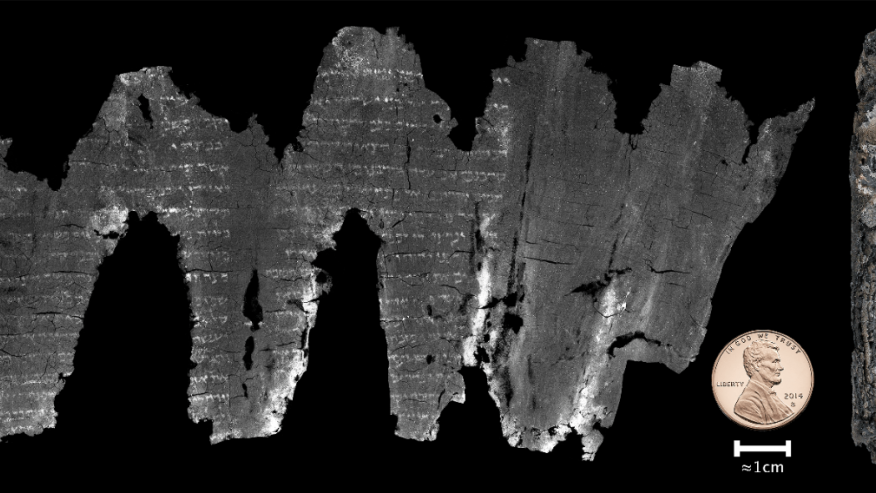DepthReading
Bible breakthrough: Scientists unlock secrets of burned Hebrew scroll
In a significant archaeological achievement, an ancient Hebrew scroll that was burned in a fire in the distant past and was seemingly impenetrable has finally become readable— and scientists have discovered that it contains verses from the book of Leviticus.
The breakthrough was made through a high-tech process called “virtual unwrapping” and involved a collaboration between experts in the United States and Israel. While no one is sure of the precise age of the parchment, referred to as the En-Gedi scroll, radiocarbon dating suggests it is from about the third or fourth century. Discovered in 1970, it likely was burned in a fire that destroyed a synagogue in the year 600 AD.
“We’re reading a real scroll. It hasn’t been read for millennia. Many thought it was probably impossible to read,” Brent Seales, a professor in the computer science department at the University of Kentucky, said during a teleconference with the media on Tuesday.
Seales, the first author of the paper announcing the discovery in the journal Science Advances, explained that the breakthrough occurred after a scan of the fragile scroll was made in Israel using a micro-CT scanner; then his team digitally unpacked the rolled, charred object. They later corresponded with experts in Israel for the analysis of the lines of Hebrew text.
They first could see that the scroll contained writing when they examined the digital version of the document in the lab, which made them feel “elated,” Seales said in a response to a question during the news conference.

The charred scroll. (Image courtesy of the Leon Levy Dead Sea Scrolls Digital Library, IAA. Photo: S. Halevi)
“The real joy came when [Pnina Shor, an expert with the Israel Antiquities Authority] sent me back the result of having read our first results, because then I knew not only were we seeing writing, but it was readable,” Seales continued, “because she and her team were able to identify it as a known text, and at that point, we were absolutely jubilant, I have to say.”
Seales also said during the news conference that their method may hold interest for those in security or intelligence who want to read something “noninvasively.”
In an email to FoxNews.com, Seales clarified that deciphering the exact age of the scroll is “tricky.” The radiocarbon dating method suggests it’s from around 300 AD “with high probability,” but analysis of the handwriting suggests it’s slightly older.
The Hebrew writing on the En-Gedi scroll has consonants, but does not have vowels. Besides the Dead Sea Scrolls, the newly-readable document represents the oldest scroll in Hebrew from the first five books of the Bible (the Pentateuch), according to the study, which published on Wednesday.
Michael Segal, a professor at the Hebrew University of Jerusalem and a coauthor on the study, said that he and a colleague, Emanuel Tov, analyzed the scroll after the team in Kentucky made it readable.
“We were amazed at the quality of the images,” he said. They first thought that it might contain all the books of the Torah, but later realized it was part of Leviticus.
He added: “I think we can safely say that since the completion of the publication of the corpus of Dead Sea Scrolls about a decade ago, under the editorship of Emanuel Tov, the En-Gedi Leviticus scroll is the most extensive and significant Biblical text from antiquity that has come to light.”
Category: English
DepthReading
Key words:

